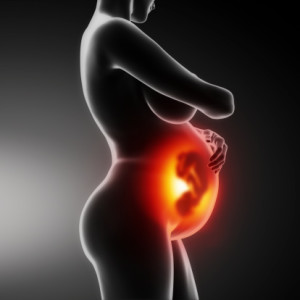Study: Maternal Complications Rise with Faster C-Sections
 A recently published study has found a correlation between the number of maternal complications experienced by women who have previously had Cesarean sections and who required subsequent surgeries for delivery, and the speed with which the C-sections were carried out.
A recently published study has found a correlation between the number of maternal complications experienced by women who have previously had Cesarean sections and who required subsequent surgeries for delivery, and the speed with which the C-sections were carried out.
The study looked at women who had previously received C-sections and attempted a subsequent vaginal birth, but ended up having their babies delivered surgically in an emergent cesarean delivery (CD). They then compared women whose emergent CDs took less than two minutes from incision to delivery to those whose procedures took longer. Shorter delivery times appeared to correlate to higher rates of maternal complications, including uterine rupture.
The study may suggest that rapid delivery, often encouraged for the sake of positive fetal outcomes, may lead to more C- section mistakes at the expense of the mother.
The results of the study were published in early July in the American Journal of Obstetrics and Gynecology and based on research previously presented at 35th annual meeting of the Society for Maternal-Fetal Medicine in San Diego, CA.
C-section mistakes may result from faster procedure times
Safe C-section practices associated with mother and baby are of great concern given that one third of singleton babies born in the U.S. come into the world through cesarean delivery. While some C-sections are unavoidable, many women who have had a CD for a first birth still wish to try for subsequent births without surgical interventions and choose what is known as a trial of labor after CD (or TOLAC). In other cases women opt for elective repeat CD.
A successful TOLAC is the safest means of delivery in such cases, but if the attempt at vaginal birth fails, an emergent CD is actually the riskiest type of birth in terms of morbidity rates. (An elective CD is associated with an intermediate morbidity level.)
The study is significant because current guidelines encourage rapid incision to delivery (I-D) times under the assumption that they produce better outcomes for infants. However, a precise time frame for optimal delivery has not yet been clearly ascertained.
C-sections performed in under 2 minutes more risky
The study found that a more rapid C-section was associated with complications that included uterine rupture, intensive care unit admission, the need for intraoperative blood transfusion, uterine artery ligation, broad ligament hematoma, some of which resulted, in certain cases, with the death of the mother.
The authors took into consideration preexisting maternal conditions and the gestational age of the fetus at time of delivery. However, they did not include women giving birth to twins or other multiple births and also excluded the births of babies with congenital defects.
The study may also be limited by the relatively small number of women whose procedures took less than two minutes (108 women, vs. 685 women whose surgeries took more than two minutes). Further studies are needed to pinpoint the precise cause of the complications, which could include doctor negligence or errors in judgment.
- 2 Minute Medicine, Increased complications associated with emergent repeat cesarean http://www.2minutemedicine.com/increased-complications-associated-with-emergent-repeat-cesarean/
- American Journal of Obstetrics and Gynecology, Surgical speed and risk for maternal operative morbidity in emergent repeat cesarean delivery http://www.ajog.org/article/S0002-9378%2815%2900668-7/abstract

 Resources
Resources
 Resources
Resources

